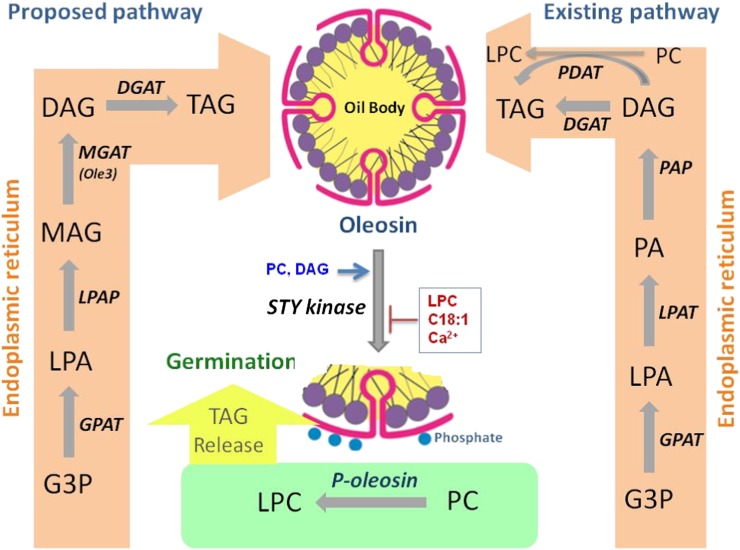Figure 7.
Schematic representation of the proposed roles of oleosin. The existing pathway occurs in a PA-dependent manner, wherein PA is synthesized by the sequential acylation of glycerol 3-phosphate (G3P) by the substrate-specific acyltransferases. The synthesized PA is dephosphorylated to DAG by PA phosphatase, and the resultant DAG is further acylated by DAG acyltransferase (DGAT) to form TAG. TAG can also be synthesized from DAG in an acyl-CoA-independent manner by an enzyme, phospholipid:diacylglycerol acyltransferase (PDAT). The proposed MAG pathway is involved in the formation of TAG during the maturation of seeds. In this pathway, G3P is acylated to LPA by G3P acyltransferase (GPAT). LPA is dephosphorylated by LPA phosphatase (LPAP) to produce MAG, which is sequentially acylated to TAG by MGAT and DGAT. The regulation of MGAT activity is achieved by phosphorylation catalyzed by STYK, and the phospho-OLE3 exhibits PLA2 activity. The hydrolysis of PC to LPC disturbs the membrane structure, inducing the release of TAG from oil bodies, which is used as the source of energy for germination. PC and DAG increase substrate phosphorylation, whereas LPC, oleic acid, and Ca2+ inhibit phosphorylation.

